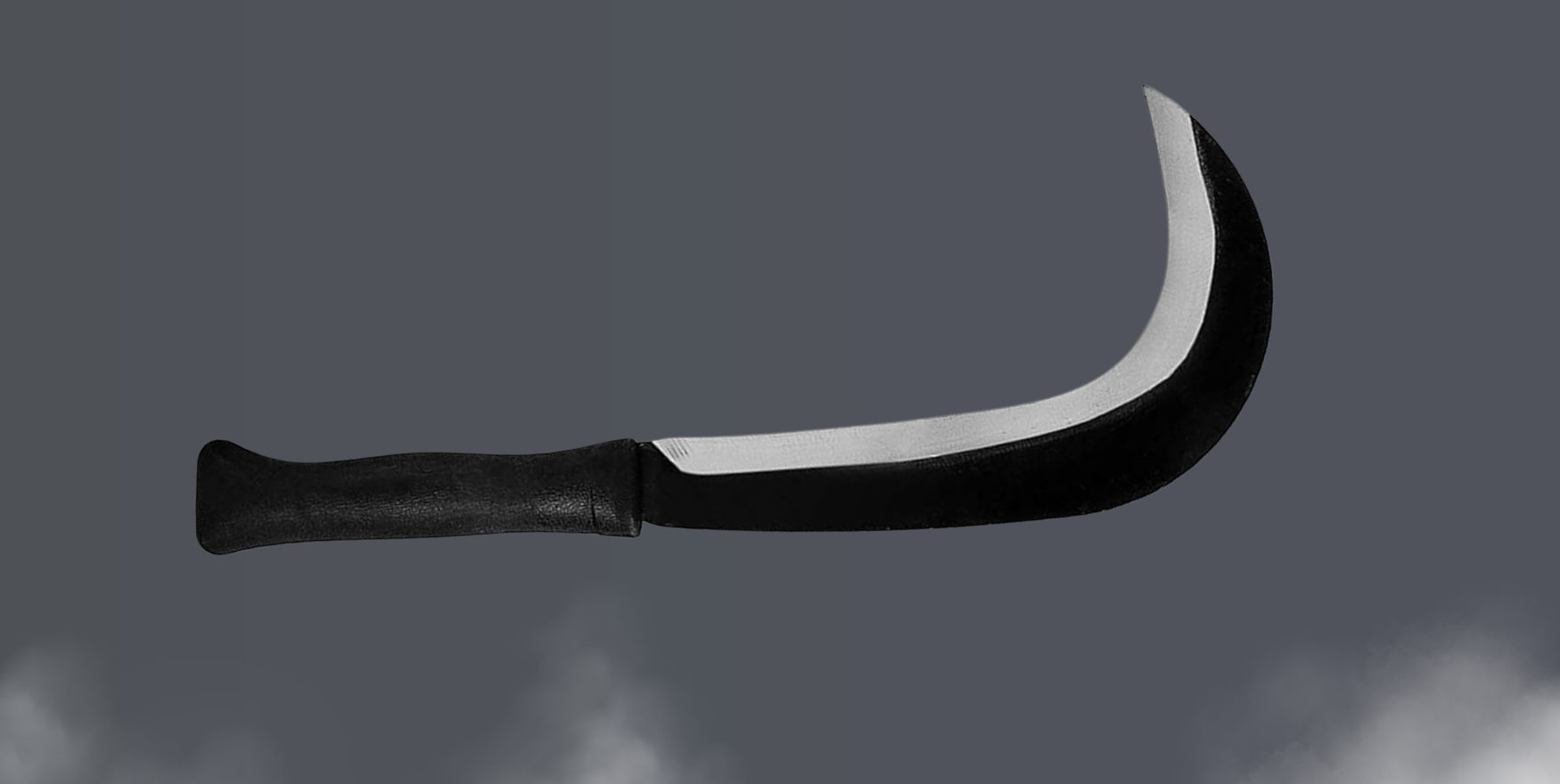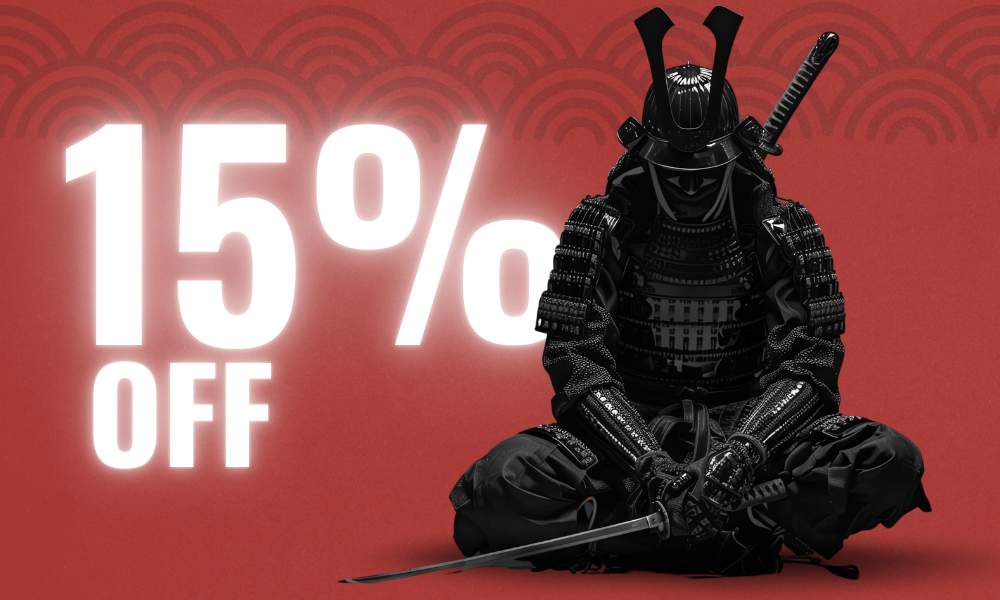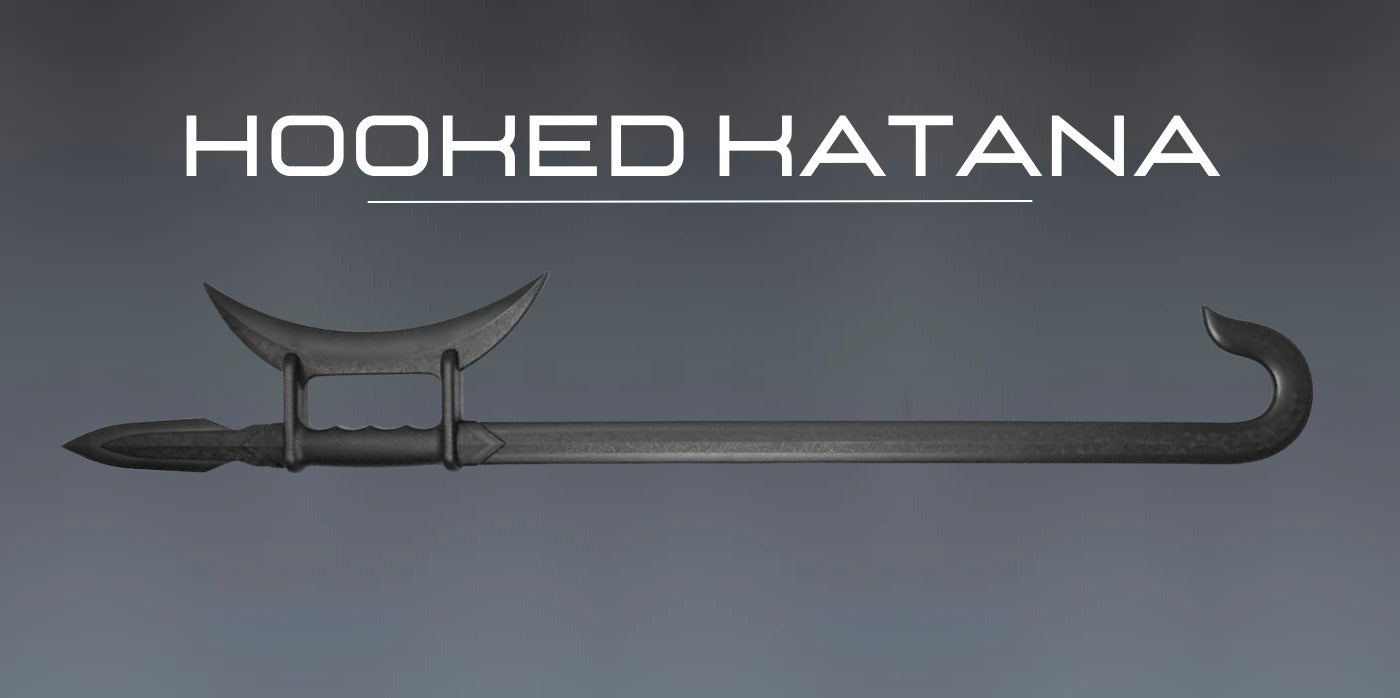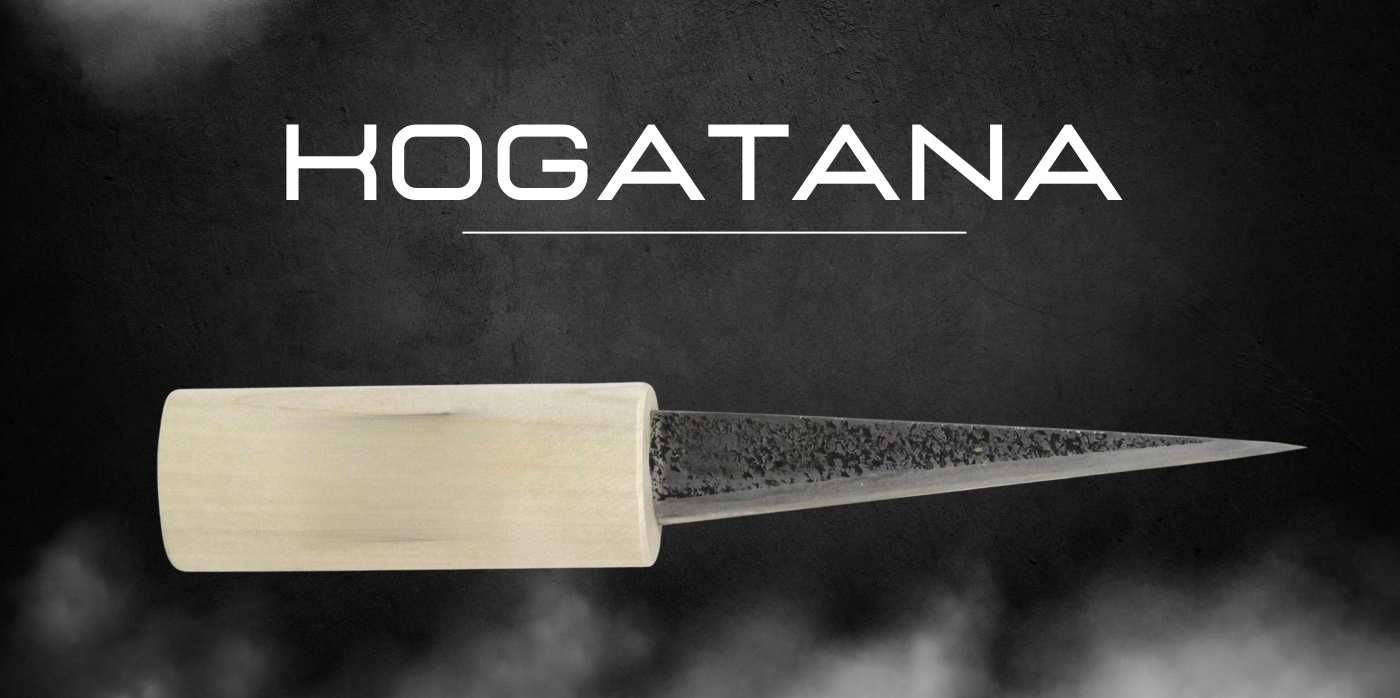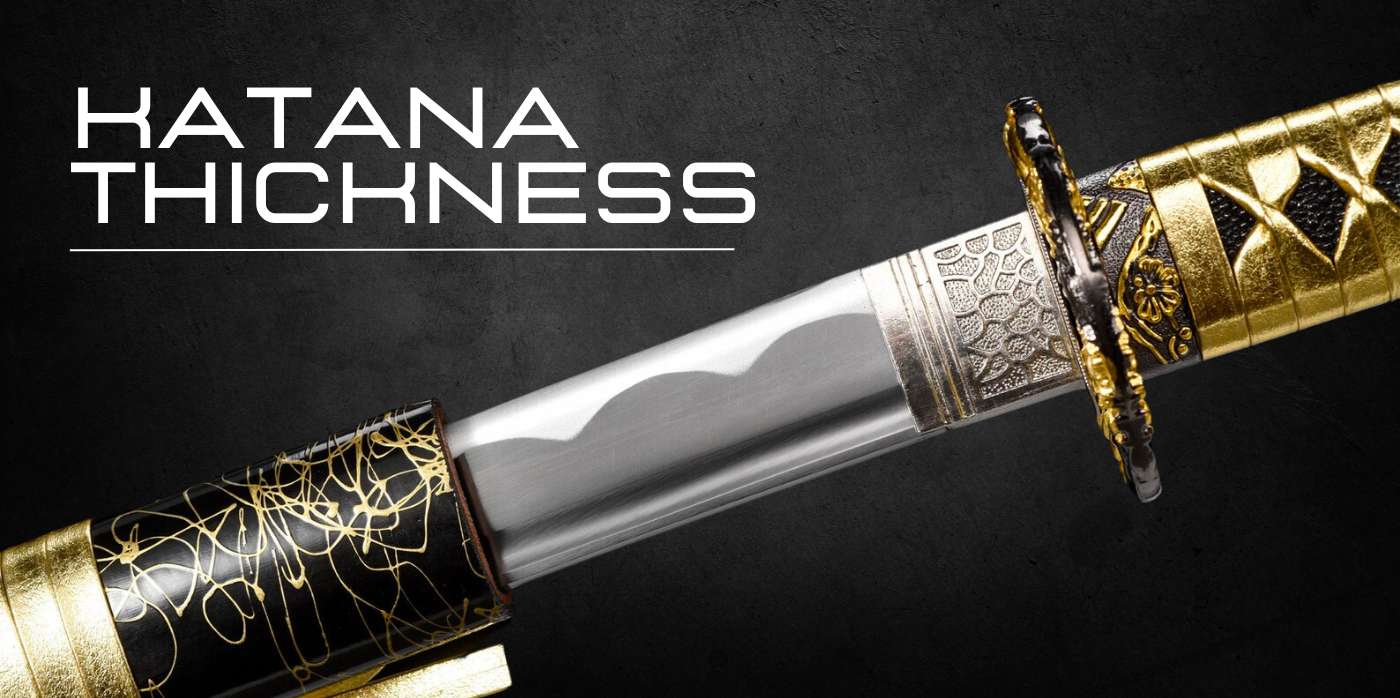What is a hooked sword
A hooked sword, often referred to in various cultures with distinct names and styles, is a type of blade that features a prominent hook or curve near the tip, designed to catch, control, or disarm an opponent's weapon. In the context of Chinese martial arts, hooked swords are famously known as "Tiger Hook Swords" or "Hu Tou Gou" which are part of traditional weaponry. These swords typically come in pairs and feature several components designed for offensive and defensive maneuvers, including a hook, a back edge, and sometimes spikes or other elements to enhance their combat effectiveness.
The primary purpose of the hook on these swords is to allow the wielder to trap and manipulate an opponent's weapon, create openings for attacks, or pull an opponent off balance. Beyond the hook, these swords might also have other features such as a pointed tip for thrusting, a crescent-shaped blade for slicing, and a handguard to protect the wielder.
What is a hooked katana
Among the pantheon of Japanese swords, the hooked katana occupies a special place, blending the lethal elegance of traditional blades with an unusual, tactical design twist. This distinctive weapon diverges from the conventional straight-edged katana through a pronounced curvature near its tip, giving it the appearance of a hook. This feature is not merely ornamental but is imbued with a deep tactical purpose, positioning the hooked katana as a fascinating subject in the study of Japanese martial weaponry.
The design of the blade, particularly its hook-like curvature, was meticulously engineered to offer its wielder a significant advantage during the clashing of steel in battle.
This sword's unique attribute, the hook, was crafted with the dual intent of disrupting an opponent's defense and creating opportunities for decisive strikes. The hooked katana was more than a weapon; it was a tool of strategy, a means to outmaneuver and dominate adversaries in the close-quarters combat that characterized the warfare of its time.
Unlike its more orthodox counterparts, the hooked Japanese katana demanded a specific mastery from its wielder, blending the art of swordsmanship with a tactical understanding of its unique capabilities. This required warriors to not only be skilled in the traditional techniques of samurai sword, the katana combat, but also to innovate and adapt these techniques to leverage the hook's potential fully.
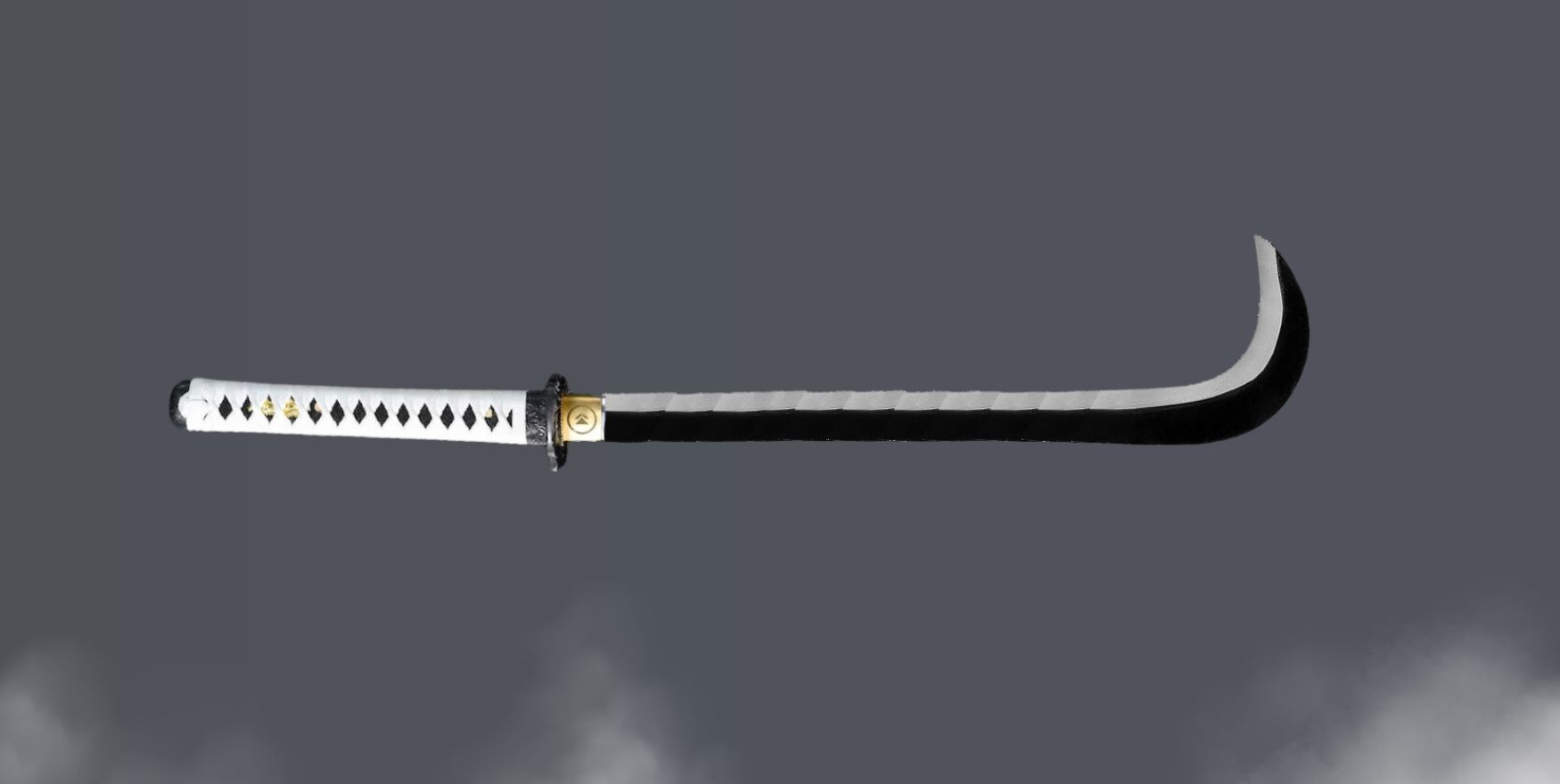
Origins and design of the Hooked Katana
The hooked katana, known in Japanese as kagi-tachi or kagi-katana, represents a fascinating chapter in the evolution of Japanese swords. Its origins, deeply rooted in the rich tapestry of Japanese martial history, showcase the adaptability and innovation of samurai weaponry.
The genesis of the hooked katana can be traced to Japan's tumultuous Sengoku period, a time marked by relentless conflict and the demand for innovative warfare tactics. In this era of samurai and daimyos vying for dominance, the hooked katana emerged not only as a symbol of martial prowess but also as a testament to the samurai's adaptability and strategic acumen, as samurai sought every possible advantage on the battlefield. Amidst this crucible of conflict, the hooked katana was born out of necessity and strategic innovation.
Tactical advantage of the Hooked Katana
The defining characteristic of the hooked katana is its distinctive-curved hook, a deliberate departure from the classic, streamlined silhouette of traditional katanas. This modification was not a mere stylistic choice but a tactical design aimed at enhancing the sword's effectiveness in combat. The hook's primary function was to catch an opponent's blade or armor, allowing the wielder to manipulate or disarm the adversary, thereby creating openings for a fatal strike.
The curvature of the hook was meticulously calculated. It was sharp enough to snag and hold onto enemy weaponry or gear but not so pronounced as to impede the sword's overall balance and cutting capability. This delicate balance between form and function required exceptional craftsmanship, making the creation of a hooked katana a task for only the most skilled of swordsmiths.
In addition to its primary function of catching and controlling an opponent's weapon, the hooked katana also served a secondary purpose in combat. The design allowed for a unique method of attack, where the samurai could hook an enemy's limb or armor to pull them closer or off-balance, making them vulnerable to a follow-up attack. This technique was particularly effective in the chaotic melee of battlefield engagements, where close-quarters combat predominated.
Type of hooked swords
Hooked swords come in various types and styles, influenced by the cultures and martial traditions from which they originate. Here are some of the notable types:
Chinese Hook Swords (Shuang Gou)
Description: This type is perhaps the most well-known version of hooked swords, featuring a long blade with a hook at the tip, a crescent guard above the handle for trapping and striking, and a pommel spike for striking. They are typically used in pairs.
Origin: These are historically associated with Chinese martial arts and were used by soldiers and martial artists in ancient China.
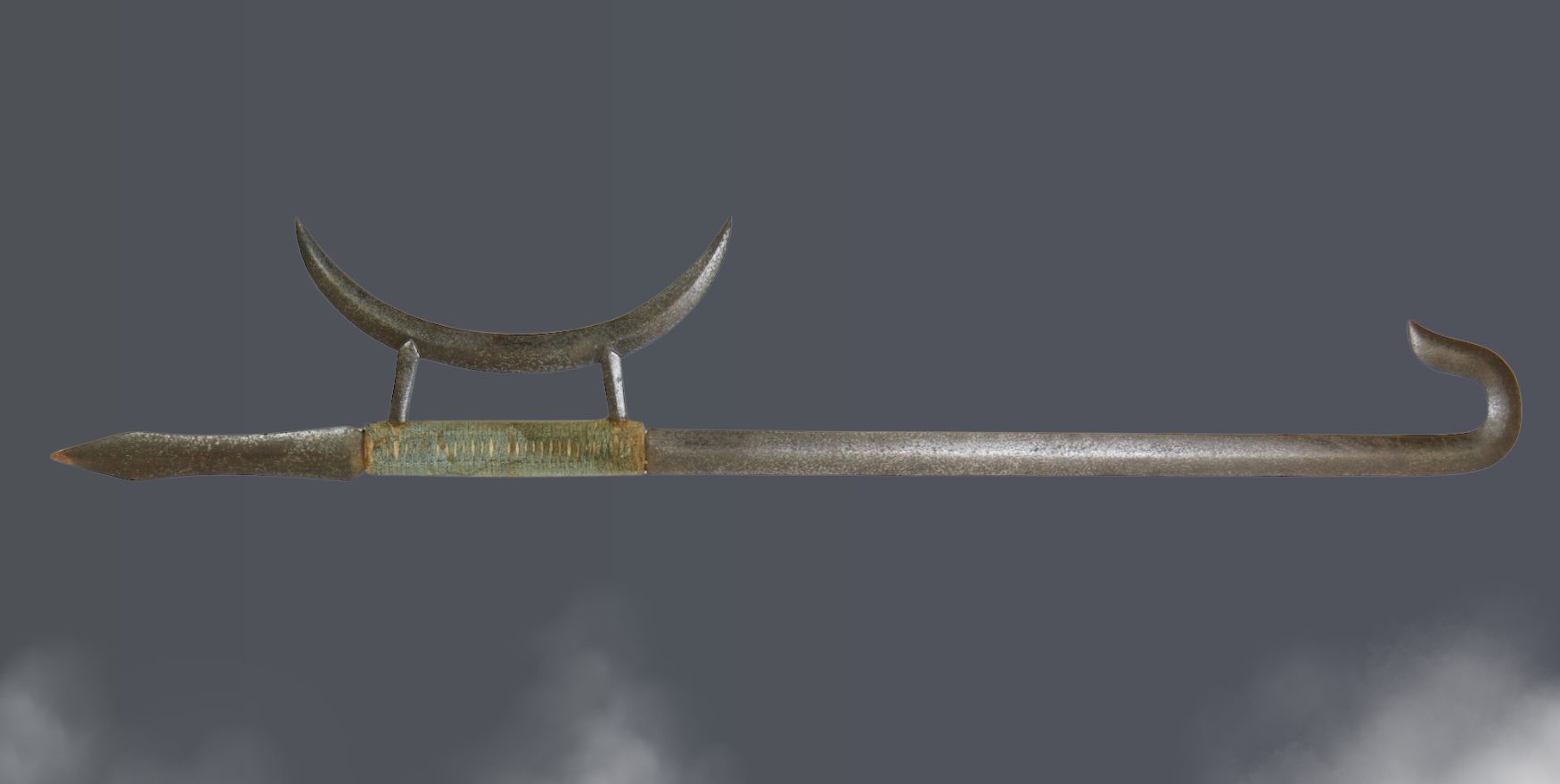
Katar with Hook (Indian Hooked Punch Dagger)
Description: A variation of the Indian katar, or punch dagger, which includes a hook extending from the side of the blade. The katar is a type of push dagger with a H-shaped handle that allows the user to thrust forward with the body's strength.
Origin: This weapon is from the Indian subcontinent, designed for piercing armor and catching enemy weapons in close combat.
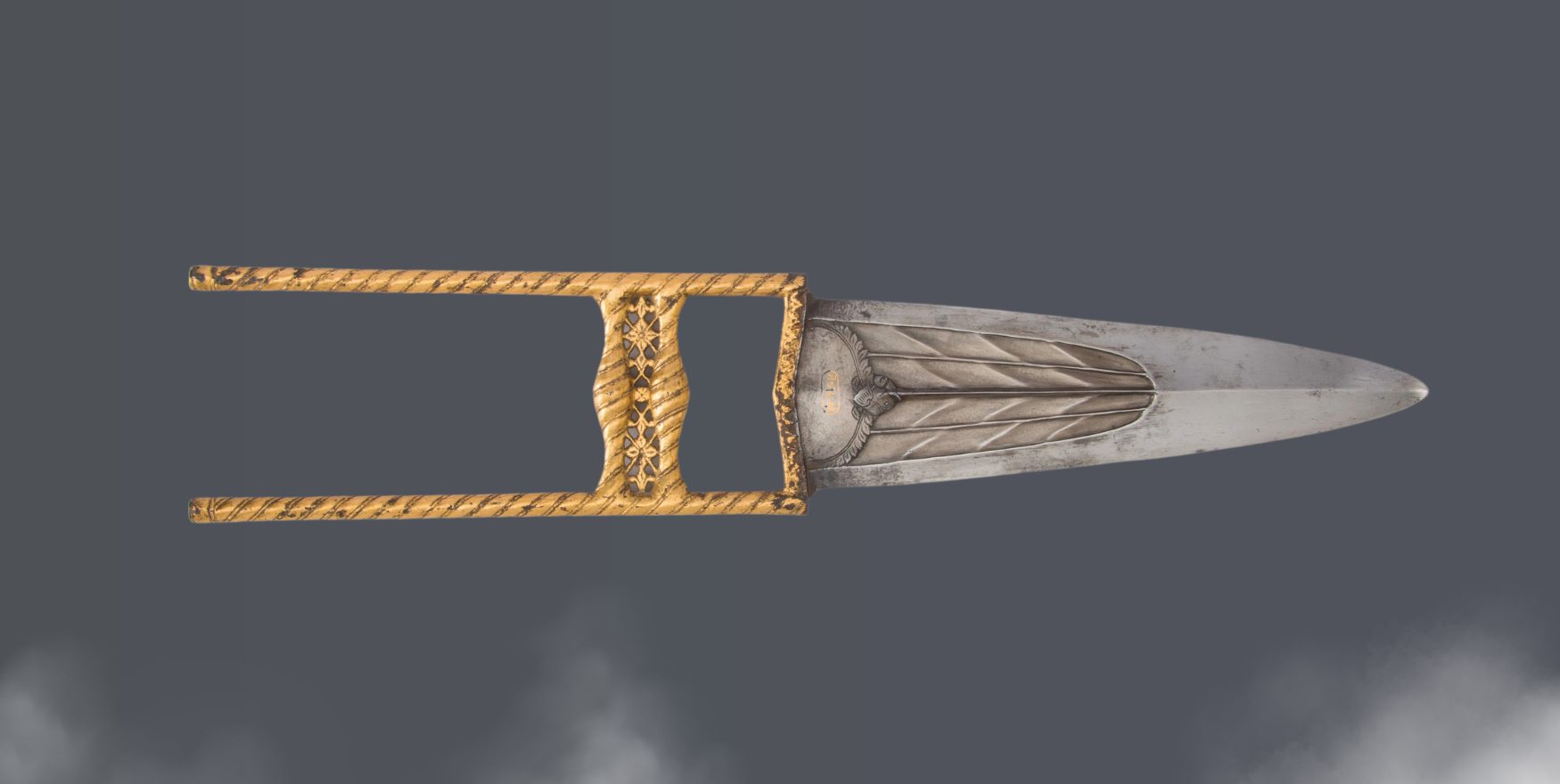
Kagi-yari (Hooked Spear)
Description: A Japanese spear (yari) with a hook attached to the blade, used to catch and disarm an opponent’s weapon or to pull down a horseman.
Origin: Feudal Japan, used by samurai and foot soldiers for its versatility in battle, particularly against cavalry.
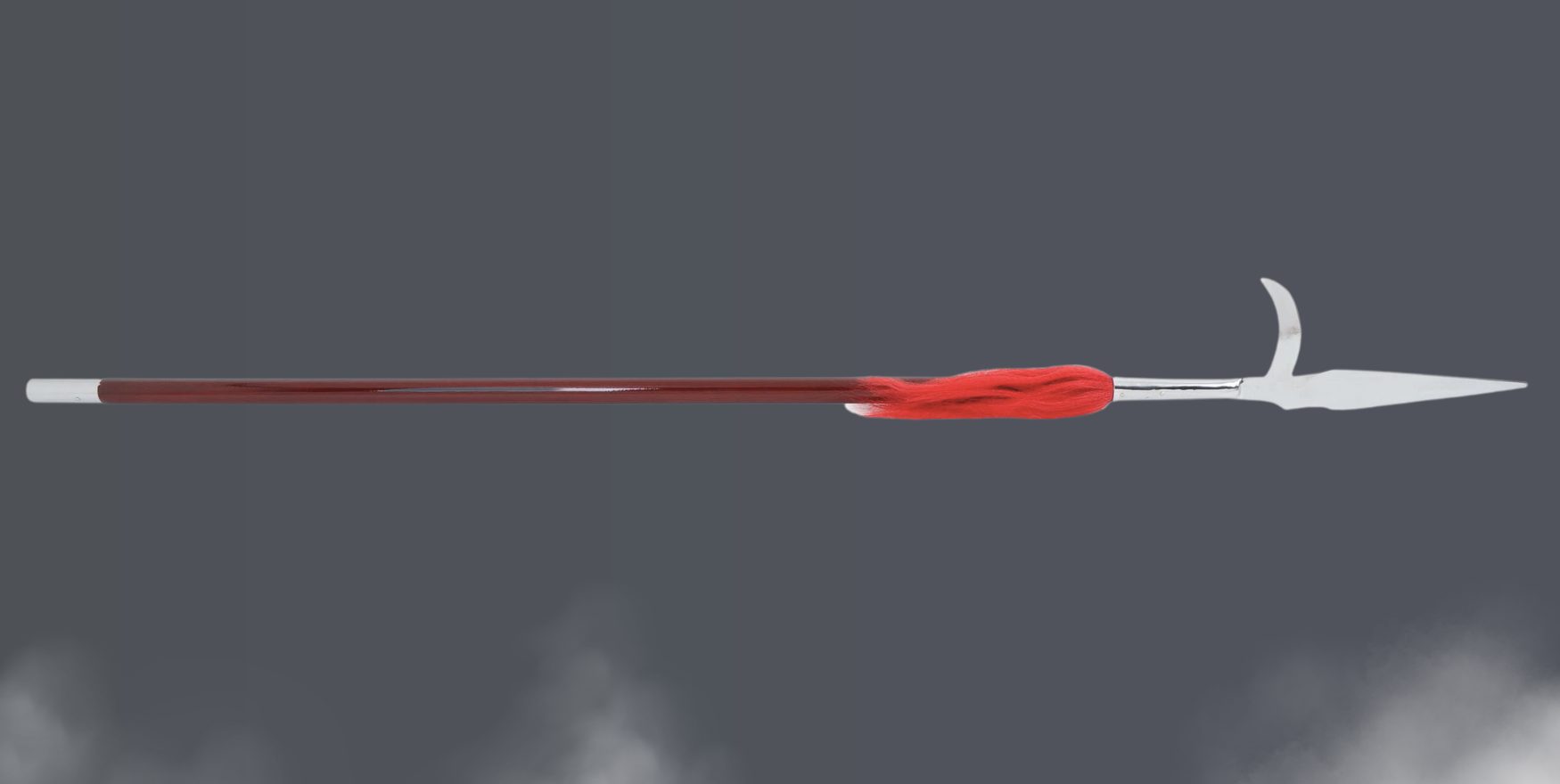
Fasces (Roman Axe with Hook)
Description: While not a sword, the fasces is a Roman symbol featuring an axe with a hook, symbolizing the magistrate's power and authority.
Origin: Ancient Rome, serving more as a symbol of power than a weapon, but the axe with a hook could be used for practical purposes in battle or executions.
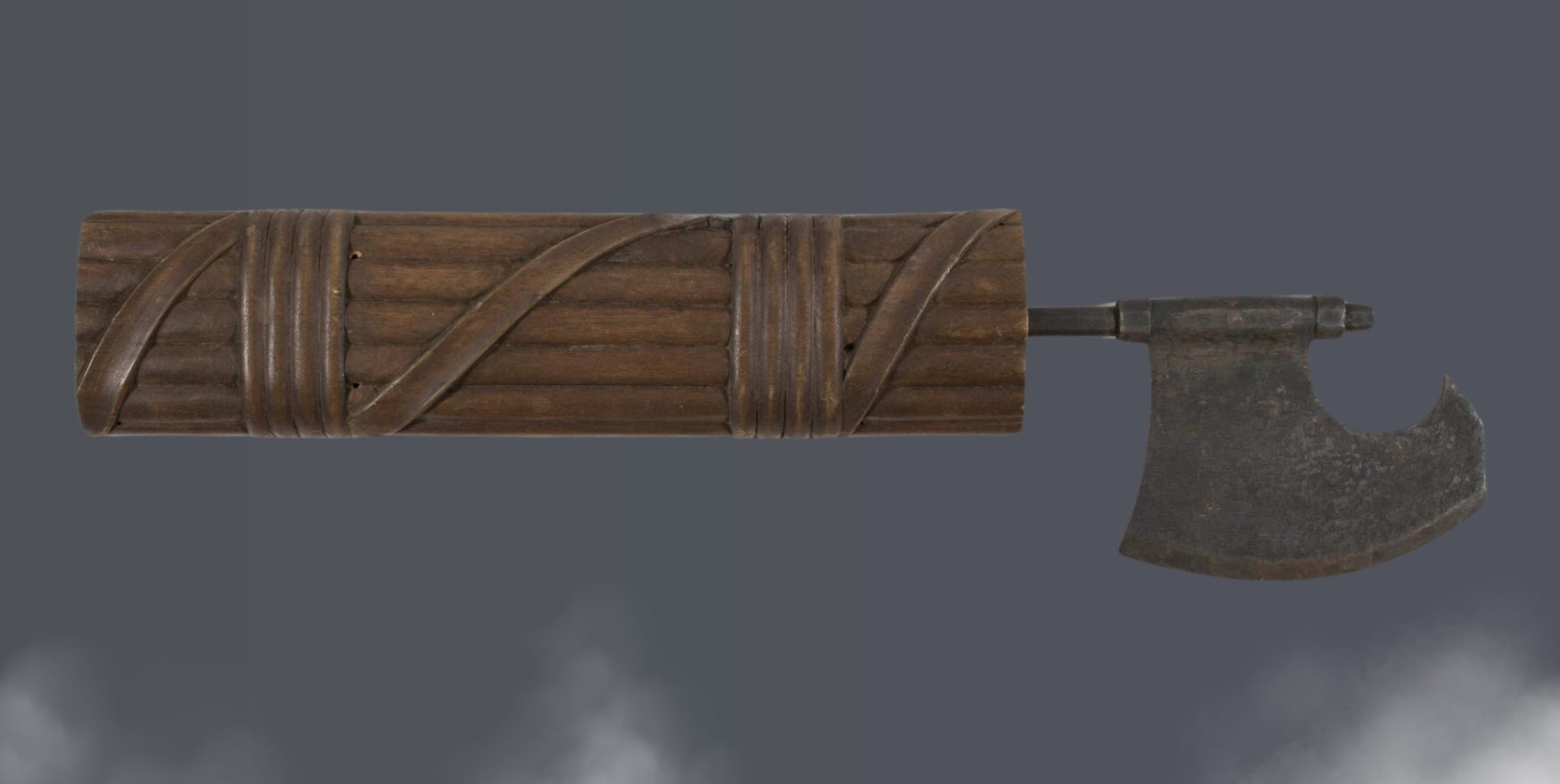
Ngao (Southeast Asian Polearm)
Description: A type of polearm found in Southeast Asia, particularly in regions like Thailand and Myanmar. It features a long shaft with a hooked blade at the end, often combined with a spear point.
Origin: Used historically in Southeast Asia for both ceremonial purposes and as a weapon of war.
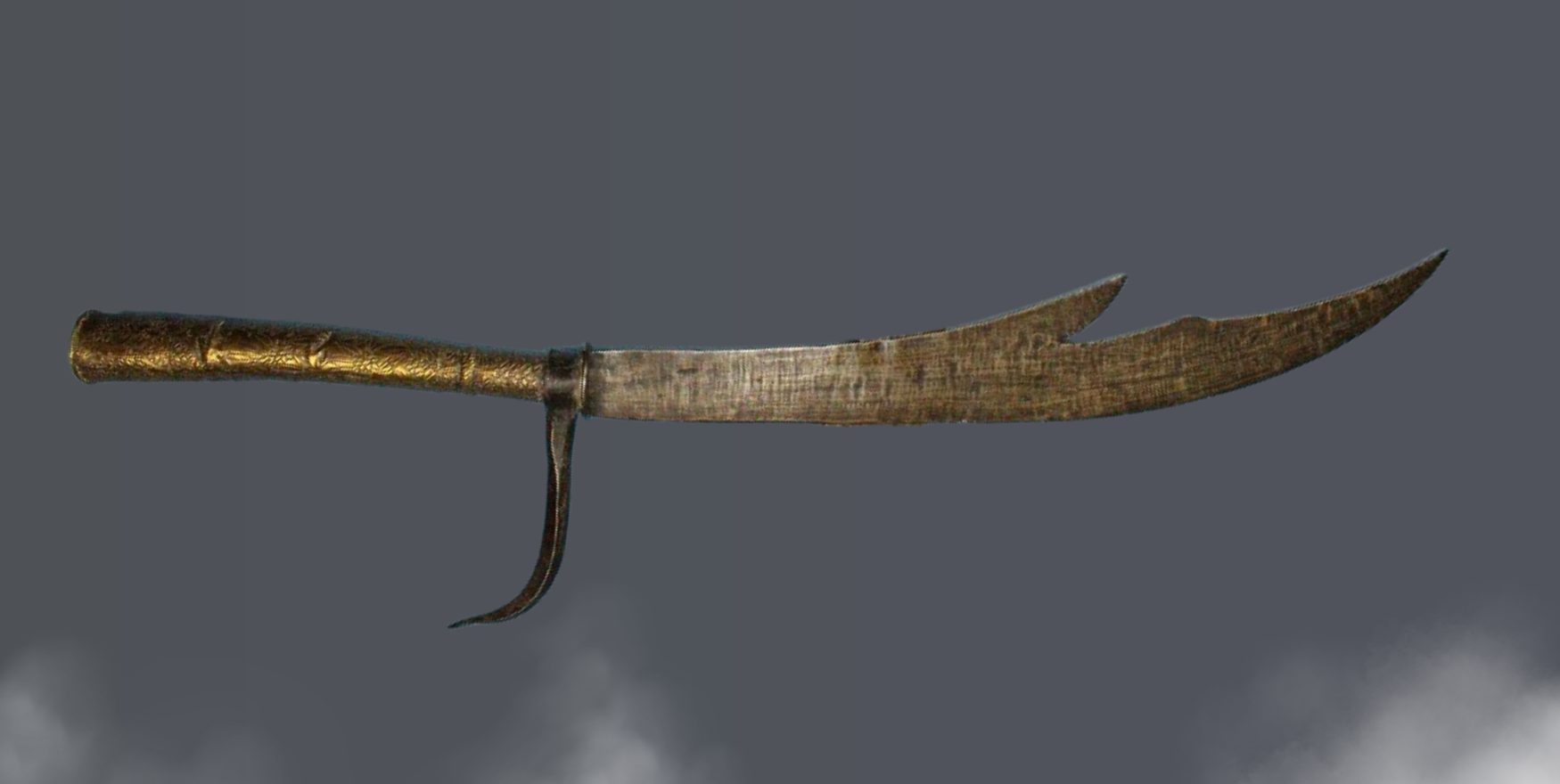
Billhook (European Hooked Tool)
Description: While primarily a tool for cutting wood and managing vegetation, the billhook has been used as a weapon in various periods, especially in medieval Europe. Its hooked blade was effective for pulling riders from horseback.
Origin: Europe, with its use as a weapon noted in medieval times, especially among peasant armies.
